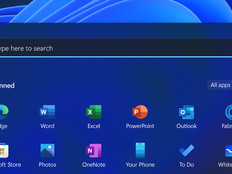Student Retention Software: Increasing Success with Tech
All over the country, campus leaders are focused on student retention. Helping students attain their desired degrees is the obvious motivator, but there are plenty of reasons to be concerned about the high number of students who don’t.
For one, dropouts can get pretty expensive. One study estimated that students who leave before graduating can drain institutions upwards of $40,000 per student. For example, colleges invest thousands of dollars each year to attract and recruit prospective students. Once students enroll, colleges may allocate scholarships, financial aid, paid assistantships and other valuable opportunities that otherwise could have gone to other students. In the long term, poor retention rates also negatively affect operational budgets and alumni donor programs.
The National Student Clearinghouse Research Center found that of the more than 2 million students who began two- and four-year college programs in 2011, just over half had graduated within six years. Students who don’t graduate could lose a combined estimate of more than $3.8 billion in lifetime income.
Emerging Tech in Student Retention Software Helps Students Succeed
Students leave college for all kinds of reasons, most of which are unrelated to academics. According to the American Institute of Research, many students leave for personal reasons, money issues or family responsibilities. Graduation rates also depend on race, ethnicity and whether students are the first generation in their families to pursue a postsecondary degree.
Because there’s so much research to help leaders understand why students drop out, it’s up to higher education institutions to create programs to turn things around. The most successful of these take advantage of technology:
- Southern Connecticut State University teamed up with IBM to use the data analytics tool IBM Watson to uncover trends in retention. For example, artificial-intelligence software can help identify students who are the first in their families to go to college. Administrators use this data to plan interventions that offer additional support to such students, who are more likely to leave school before graduating.
- Southern Illinois University implemented an AI tool from the Education Advisory Board, the Student Success Collaborative, which connects students with advisers. Predictive analytics results alert advisers to early warning signs that students might be headed in the wrong direction, which gives advisers a chance to intervene before students get too far off course. In the first year of implementing the collaborative and shoring up its student support services, SIU’s retention rate rose 8.3 percentage points.
- Weber State University needed a flexible learning management system for both full-time and part-time, nontraditional students. University administrators implemented Canvas as the basis for cloud-based online learning courses, offering extensive professional development to ensure faculty were up to speed. In an interview with EdTech, Dean of Online and Continuing Education Bruce Davis emphasized how the technology is helping with retention. “We’re trying to raise the six-year graduation rate,” he said. “Online plays a key role in that. It provides flexibility if you need to take an extra course a semester to speed your time to completion. It’s an important tool in our bigger institutional strategy.”
IT Investments Help Colleges Put Tech to Work
Each of these university retention software solutions deploys a mix of technologies, which means that institutions pursuing such solutions must first consider the supporting infrastructure that they’ll require. For example, can the network handle extensive online communications? Do campus staff have the skills to translate data-driven analytics into effective interventions? And, of course, how can staff ensure that student information is kept safe, secure and private?
The good news is that higher ed institutions are creating workable solutions to these and other challenges, and their investments are paying off. Increasing student engagement and improving retention rates pays dividends for students and institutions alike.
This article is part of EdTech: Focus on Higher Education’s UniversITy blog series.










